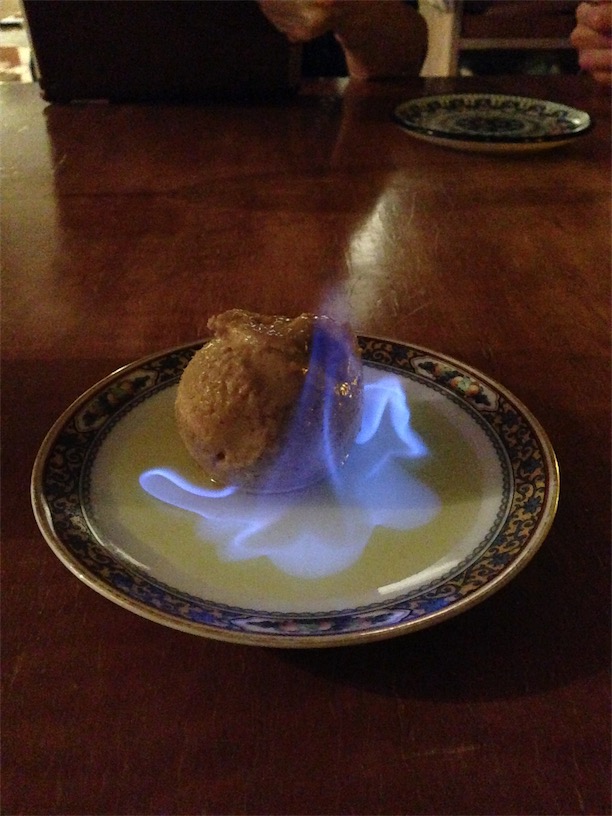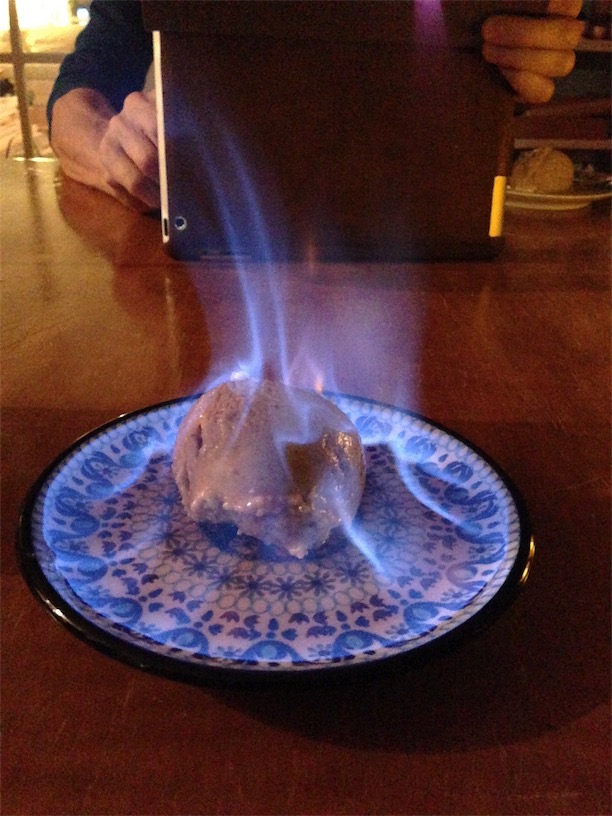I was watching a rerun of Heston Blumenthal’s In Search of Perfection, more specifically the Christmas instalment, where one of the awe-inspiring courses is this ‘multi-dimensional’ flaming sorbet. Now to be totally honest, while the whole shebang (leather fragrance and dry ice and stuff) looks (and I’m sure, smells) amazing, I think it’s just a little bit too much faff to try and reproduce at home. But the flambeed ice cream part by itself does have a certain appeal.
Now the secret behing flambeeing ice cream without having it turn into a puddle of molten, suddenly too sweet, custard is a modernist (i.e. food industry) gel builder called gellan (aka E 418, a water-soluble polysaccharide hydrocolloid, pduced through fermentation by the bacterium Pseudomonas elodea). Gellan is heat-stable, and builds firm gels. So you can make a gelled custard that will hold together even when heated. So if you heat a scoop of ice cream containing gellan, the heated outside will hold up, and provide insulation for the inside, which will remain frozen. You need only a small amount (less than a percent in weight) to achieve this effect.

So for this year’s Christmas dinner (which, incidentally, featured a Kelly Bronze turkey as the main course) dessert, I made a hazelnut ice cream with gellan, and had everyone choose their liquor of choice to flambee it – ranging from rum, through amaretto, and brandy, to Pernod. Turns out that the amount I used (4 g to a standard recipe of 250 g cream, 350 g milk, 200 g hazelnuts, 4 egg yolks and 100 g sugar – plus some minor ingredients) was in fact still too much: while it worked perfectly to keep the ice cream together under flame, the consistency of the ice cream suffered – too stiff and crumbly when scooping. Next time I’ll halve the amount of gellan used. Other than that, it was a huge success.

